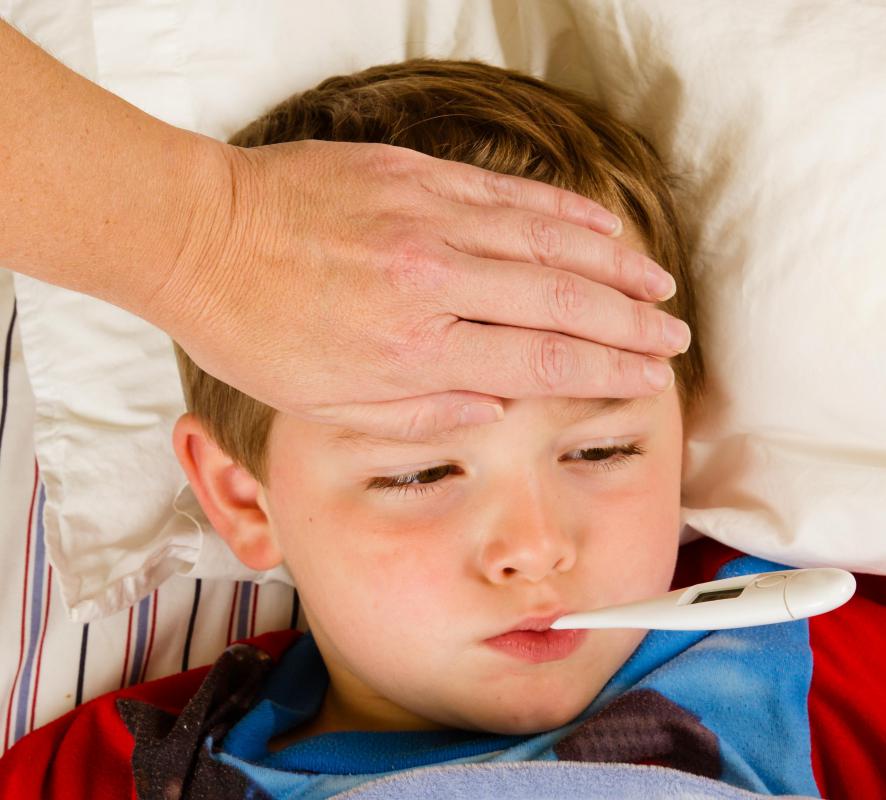At WiseGEEK, we're committed to delivering accurate, trustworthy information. Our expert-authored content is rigorously fact-checked and sourced from credible authorities. Discover how we uphold the highest standards in providing you with reliable knowledge.
What Are Normal Pediatric Vital Signs?
Pediatricians regularly gauge the vital signs of their patients for indications that something might be wrong. As a child ages from neonatal age to adolescence, the definition changes for what are considered normal pediatric vital signs. For a toddler, many physicians agree that a waking heart rate should be between 80 and 110 beats per minute, the respiratory rate should be between 24 and 40 breaths per minute, and the systolic blood pressure should be 90 over about 105. Doctors will have slightly different expectations, however, for newborns or older, school-age children.
Blood pressure, measured on children's right arm across from the heart, is one of the most crucial pediatric vital signs to measure well-being. For the youngest children — neonatal, infants and toddlers — systolic blood pressure is pretty much the same: 70 over 100, 87 over 105, and 90 over 105, respectively. These rates change as children experience their largest growth spurts, with elementary-age children at about 97 over 112 and teenagers at 112 over 128.

Respiratory rates are typically measured first during an examination, since a child cannot be crying. Though normal rates can increase with fever or stress, the trend is that less breaths are needed as children age. Infants should breath between 30 and 60 times a minute. By the age of 1, babies should be breathing 20 to 40 times a minute, a trend that continues until about first grade. School-age children are typically in the range of 18 to 30 breaths a minute, with adolescents needing just 12 to 16 breaths every minute, while resting.

Heart rates are closely tied to respiratory rates, also increasing with added stress or fever. These pediatric vital signs typically are considered normal for infants when the pulse reveals between 100 and 160 beats per minute while awake or 75 to 160 beats per minute while sleeping. From toddler to preschooler, the maximum heart rate should not exceed 110 beats per minute, while sleeping heart rates should fall between 60 and 90 beats per minute. After puberty, however, the waking heart rate falls between 60 and 90 beats per minute and 50 to 90 while asleep.

Other pediatric vital signs are important to physicians, such as height, weight and body temperature. In concert, these indications give a picture of whether a child is developing according to normal expectations and if any medical conditions might be present. An abnormal temperature, respiratory rate, heart rate or blood pressure could cue a doctor to perform tests to identify the cause of the disruption.
AS FEATURED ON:
AS FEATURED ON:














Discuss this Article
Post your comments